Filed under: Capitalism, Indigenous, Southern Mexico, The State

Reflection on the actions of the state, organization of the communities, and the interests of capitalist tourism during the COVID-19 pandemic in Oaxaca.
Recently, within the context of the COVID-19 crisis, state and national media have promoted the program, “Return to Normality,” and the existence of “Municipalities of Hope!” These are spaces where there are no confirmed cases of COVID-19, and as such, are being encouraged by the state to return to their normal activities. The state of Oaxaca leads this list of “Municipalities of Hope,” with 213 municipalities, or 37.3% of the state’s total municipalities, registered under this category and free of COVID-19 cases.
In the conference where they announced the “Municipalities of Hope,” the governor of Oaxaca, Alejandro Murat Hinojosa, was present seeking to justify the necessity to return to “normality” in order to reactivate the economy. He referred benevolently to the “usos y costumbres,” or internal forms of organization of Indigenous and campesino communities, that for years the state has tried to domesticate with their legislation and political proselytism. Now, like always, these same authorities have tried to take credit for the work carried out by the communities, not recognizing that community organization, regardless of everything, has managed to respond to the health crisis in an effective manner in these municipalities. State authorities conveniently forget to mention that the community work and decision-making was done without any state or federal influence, and in many cases has been derivative of assemblies and collective discussion. Their omission has the perverse purpose of convincing us that the hope of Mexico is grounded in mutual aid, which state authorities have never participated in, but on the contrary, have sought at all cost to exterminate. Cynical manipulators!
Their deceptions do not take away from the fact that the municipalities free of COVID-19, are the result of the state’s inability to domesticate the life of Indigenous communities. Perhaps in some moment, we will see that these communities, and many more, are free from state domination. We will see that they can respond, as they are doing now amidst the health crisis, and as they have always done, to genocidal violence in a responsible and collective manner.
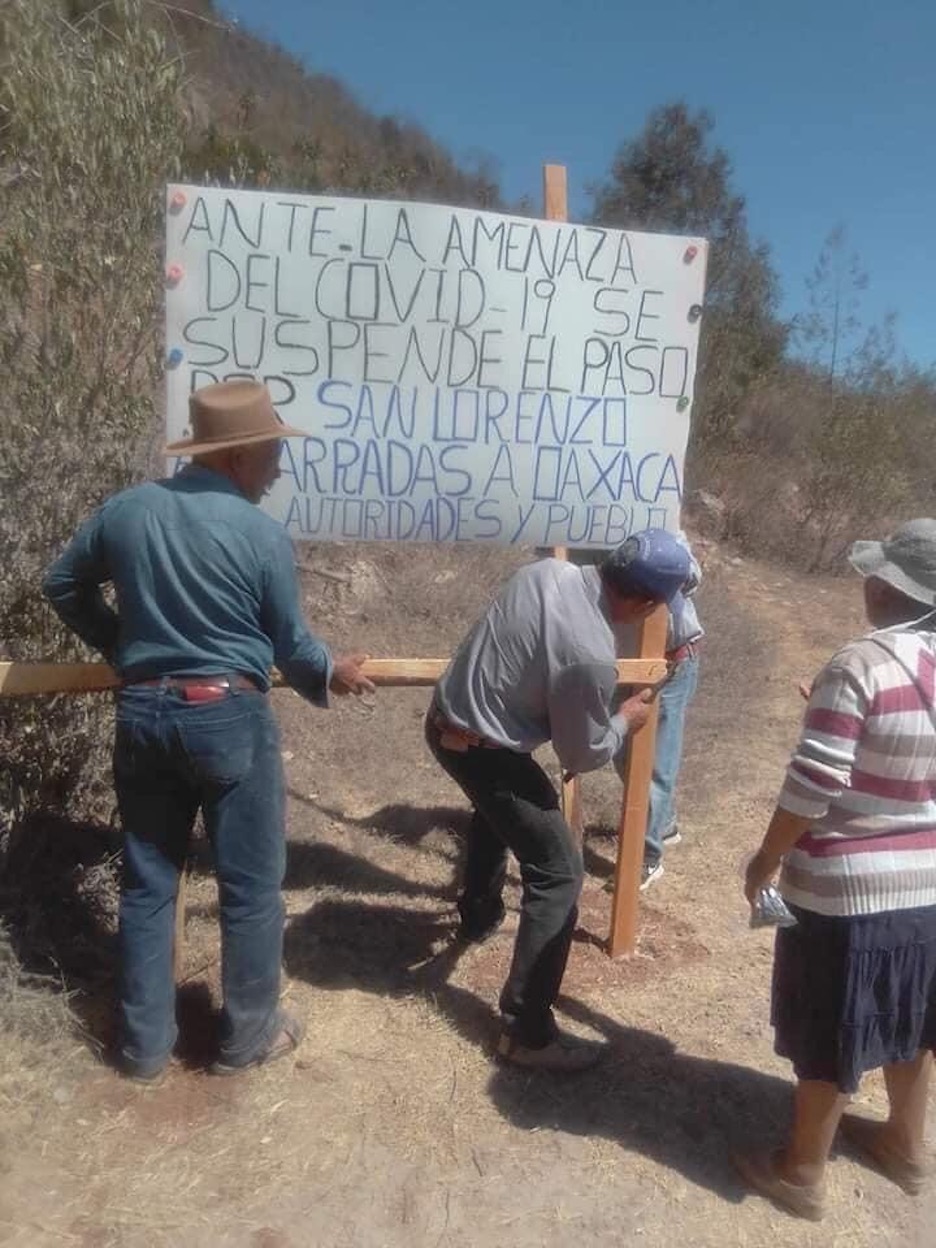
On the other hand, it is important to recognize that the close relationship between the governor of Oaxaca and the president Andrés Manuel López Obrador, is a relationship developed around capitalist extraction. This political-economic model currently rules and puts in doubt the supposed respect for the usos y costumbres of which now the state is so proud. It is enough to remember that the national economic rescue plan is based in territorial dispossession, the displacement of peoples (the majority Indigenous) and the destruction of the natural world, with projects of death like the Interoceanic Corridor and the Southern Bypass Highway. Thus, the hope. For who? Why?
This idea of hope is just as empty as the idea of multiculturalism in Oaxaca, which year after year is reproduced on television, radio and print and digital media in Mexico and throughout the world. It is presented most pointedly in the folkloric festival poorly named “Guelaguetza,” and which I will henceforth refer to as “Lunes del Cerro,” because I refuse to reproduce the discursive manipulation of something that for us in Oaxaca means mutual aid and reciprocity. The “Lunes del Cerro” festival is carried out every year in Oaxaca in July, where national and international tourists, wealthy elites and state functionaries, gather to consume a commodified version of Indigenous culture and tradition.
This festival and the reopening of the city to tourism with certified “safe points,” in the same way as the “new normality,” are pretenses seeking to reopen Indigenous municipalities for the reactivation of the economy and for the benefit of the tourist industry in all its forms: ecological, cultural or revolutionary tourism. Yes, in the same way that in Chiapas there exists Zapatista tourism, in Oaxaca there exists something similar. If not, we wouldn’t have streets, working class neighborhoods and communities with international travelers interested in social-political movements, without the desire to cultivate something meaningful beyond their own middle-class experience of “contact with the unknown other,” disguising their paternalism as solidarity.
However, the celebration of “Lunes del Cerro,” which for years has disguised xenophobia and discrimination, serving to control Indigenous people and to discard people of African descent, had to be cancelled this year due to the health crisis. However, businessmen and the tourist industry, scandalized by the announcement, have tried to argue that “Oaxaca cannot lose that source of resources,” completely forgetting that those who fill their pockets year after year aren’t all Oaxacans. On the contrary, our participation is marginal. On some occasions, if our participation does exist, someone from the community can participate with a dance that isn’t of Mesoamerican origin, but is rather based in a nationalist discourse of post-revolutionary Mexican national integration.
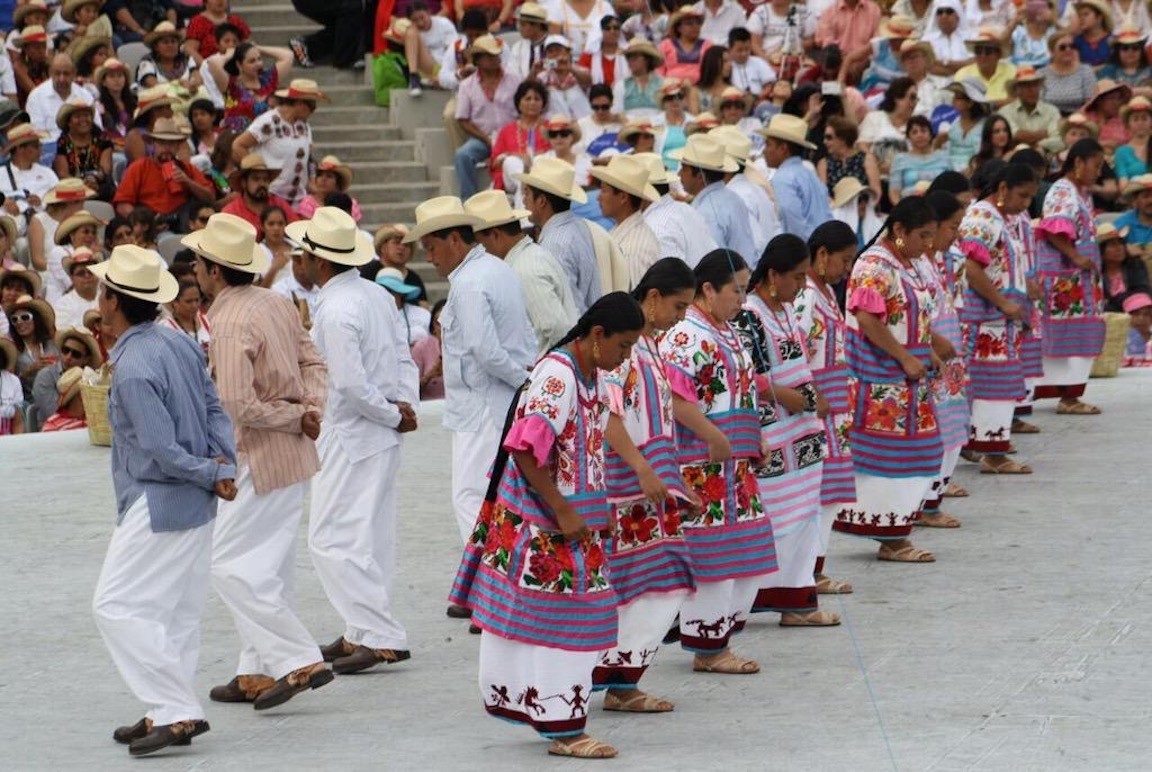
In 2006, in the context of a widespread social uprising, assassinations, disappearances and extensive state violence, efforts were made to cancel the event. However, what emerged instead, was a free event, the “Guelaguetza Popular,” which on a smaller scale, reproduces the same folkloric and commodified logic of Indigenous people in Oaxaca.
Now we see that a virus represents the possibility of a restructuring of the tourist industry to continue generating profits with the consumption of non-existent, yet manufactured identities that justify national and international domination and paternalism. Offering safe and sanitized tourist destinations, because the state as well as businessmen, are only interested in profit.
The “Lunes del Cerro” is not the ultimate festival for Oaxacan people. It does not represent our negated history, which now they vindicate, so long as it conforms with what their “committee of originality” determines. It is a celebration that arose to integrate Indigenous people into the nation and to exclude black people. It seeks to homogenize and create identities in the service of power. This festival has spread throughout Mexico, and even to the United States, playing on the nostalgia of migrants who have been forced to leave their communities.
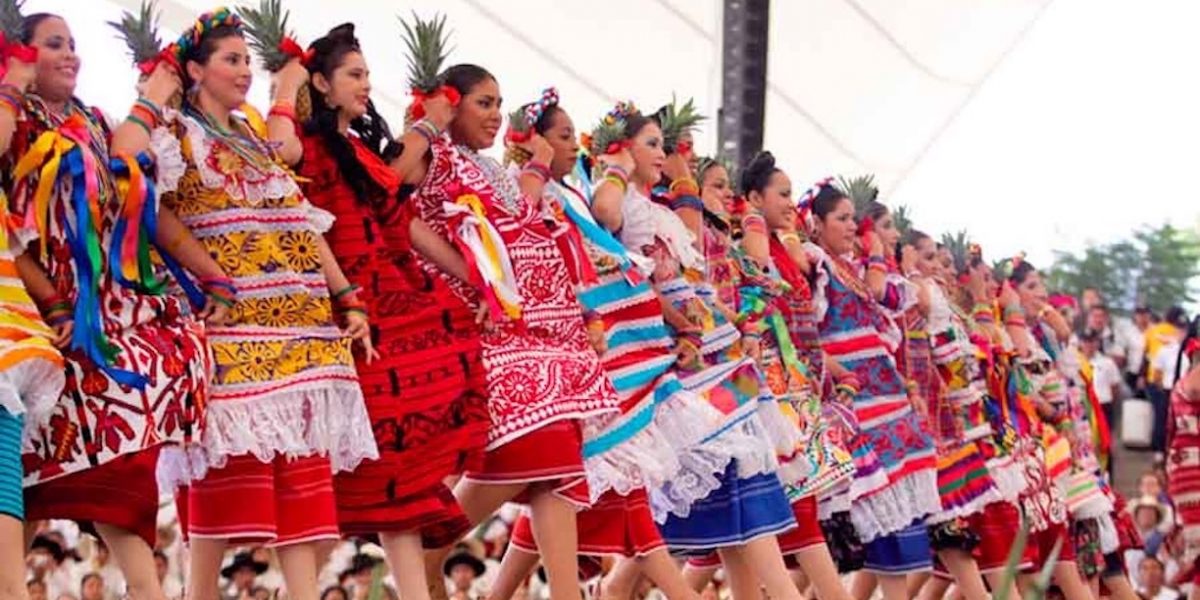
In this festival, as well as in the various events that usually accompany it—Festival de mezcal, la leyenda de princesa Donaji, La Diosa Centéotl, la Calenda of Delegaciones and el Bani Stui Gulal—we are dosed with who and what we should be, and what place it is that we should occupy in front of the state and in front of the tourists.
They can only lie to our faces. Even in their supposed cultural brotherhood, racism and exclusion stand out. Whoever has sat in that auditorium or has been to that festival can witness that the group of mostly white mestiza women from Tuxtepec dancing the “Pineapple Flower” dance generates more expectations than the presentations of, for example, Indigenous people from the Sierra Mazateca. Throughout their entire dance, they make slow movements facing the floor. Why does the mestizo have red lips and look up while the Mazateca women look to the floor and move in a discrete manner? If your answer doesn’t take into account the racism involved, then the culture industry has had an effect.
In 2019, with the participation of Yalitza Aparicio in this festival, these stereotypes were not mitigated. On the contrary, the public desired to see her represent the new identity of an Indigenous women that struggles for her right to a place in the world, while the rest of Indigenous women live and die in anonymity. For me, Yalitza is what Fanon called the colonial bourgeoisie, doing her work, white on the inside, Indigenous on the outside.
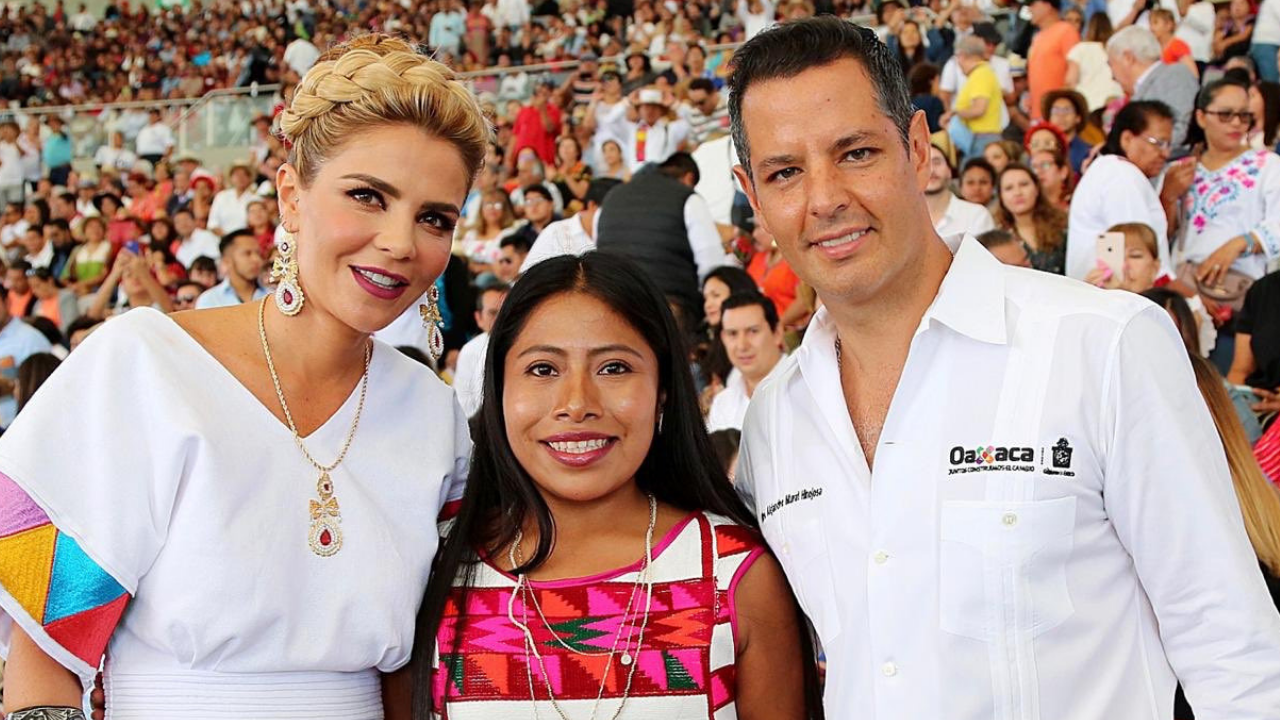
I hope that if someone from Oaxaca reads this and feels challenged by my words, they can channel that feeling into some form of disobedience. This disobedience can help us face a virus, in the same way that it can help us destroy the aspirations of the state to make indigeneity a spectacle—the same indigeneity that they have always negated, strangled or used at its convenience.
The government, businessmen and cacique philanthropists like Harp Helú and Toledo should not have any merit. Their labor is to sell that which cost our ancestors blood, sweat and even life. Their commodity culture is not ours, because only intellectuals and tourists can access it as long as they have enough money and influence to be in one of their cultural centers, museums or libraries. For them, we are nothing more than servants. They are the boss to whom we have to serve. We are the people whom they fuck over. Why then do we have to give thanks to the people who can buy a colonial monument and convert it into a museum; to those who dress in traditional blouses that cost thousands of pesos; those that eat and sleep on the bones of their slaves? There benevolence should disgust us!
The credit should be ours, if we disobey the normality and the only economic alternative they offer, tourism. Let the only Guelaguetza and hope in which we believe be the one that is built inside our communities, the one that mocks the state and its aspirations.
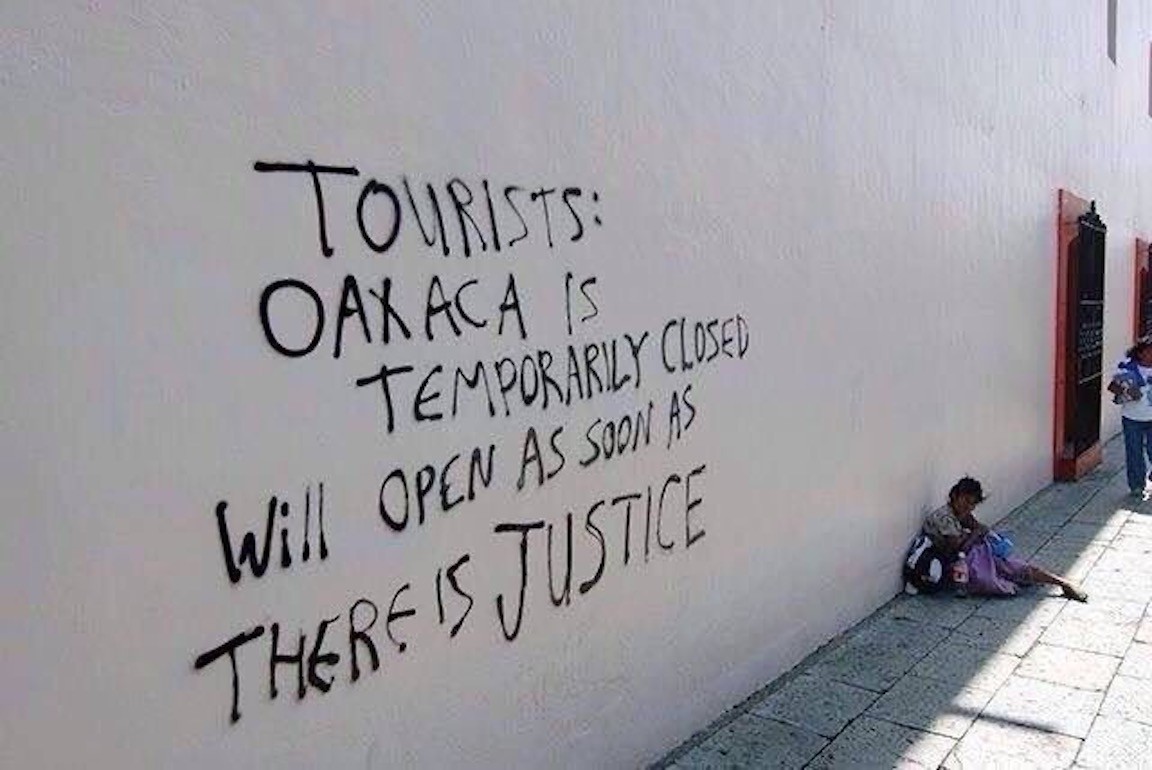
My wish is that once the fallacy of sustainable cultural tourism collapses, for the lack of water for example, because Oaxaca is more and more desert-like, or for whatever other reason, all those that fell into the trick of “thanks to tourism we will live better,” recuperate what was taken or denied from them. My hope is that one day we can walk freely in the streets of the city of Oaxaca without the barriers of class and race, those that usually distinguish colonized tourist spaces.
Let’s not return to the normality that criminalizes, singles us out, kills and surveils us!
Death to the state and its industry of cultural tourism!





